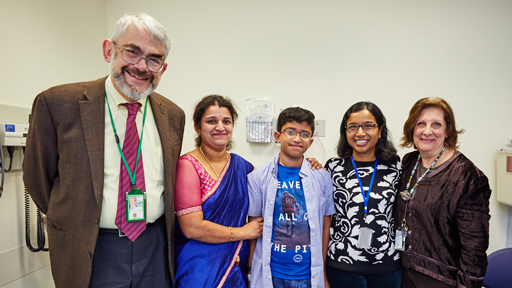The Social Genomics Project, conducted by NHGRI's Social and Behavioral Research Branch (SBRB), aims to understand what people around the world think about the intersections between genomics, genetics and society. The three-year project is comprised of seven surveys that ask questions about health risks, the flow of health information among family and friends, the use of genomic information to make important life and health decisions, as well as ancestry and race.
To recruit survey takers, NHGRI is using the institute's Facebook and Twitter accounts* to invite fans and followers to participate in the study. The hashtag, #your2cents helps brand the effort.
"Much of the research we do in our branch focuses on specific populations," said Laura Koehly, Ph.D., acting chief of SBRB and coordinator of the Social Genomics Project. "Now we are trying to get a wide representation of people, and social media can help us do that."
Since NHGRI began its social media campaign, posts on the study were viewed almost 100,000 times and more than 500 surveys have been completed.
The NHGRI/Smithsonian National Museum of Natural History (NMNH) exhibit, Genome: Unlocking Life's Code, played a role in participant recruitment too. While participating in the hands-on activities of the exhibit's Genome Zone, visitors could respond, via text message, to questions similar to those in the surveys. Respondents then received a text message letting them know about the Social Genomics Project and how to participate. At the study's website, they could view 'word clouds' based on the responses from those participating in the Genome Zone activity. Word clouds are visual representations of the words people used in their responses. The most frequently used words appear larger.
SBRB worked with NHGRI's Education and Community Involvement Branch (ECIB) and the educators at the NMNH to incorporate the activity into the interactive Genome Zone. "There are very few opportunities in which our researchers are exposed to that many people," said Carla Easter, Ph.D., deputy chief of ECIB. "It provided a unique opportunity to engage with the public."
"So many millions of people go through the National Museum of Natural History. We thought this was a great opportunity to connect with people from many different backgrounds and let them know about the Social Genomics Project," said Dr. Koehly. An estimated three million people visited Genome: Unlocking Life's Code, which opened on June 14, 2013.
The exhibit closed Sept. 1, 2014, and is traveling to various science centers and museums in North America. Dr. Easter hopes the venues that host the exhibit will also choose to host the Genome Zone and the text messaging activity. "We should engage the public in places where people can talk about genomics with no pressure or judgment," she said.
Before a single survey or social media post was made public, the plan for the study went through a year-long public comment and clearance process at the National Institutes of Health, the U.S. Department of Health and Human Services, the U.S. Office of Management and Budget and the Smithsonian Institution. During that period, the public could voice their concerns about the study, and the privacy of survey takers was checked and double-checked. SBRB staff revised the study based on the feedback they received.
"Getting the project cleared took a very long time," Dr. Koehly said. "But we're glad to have these surveys available, and we encourage the public's participation."
SBRB will collect surveys through 2017, and once the survey period is over, the team plans to publish the results - without identifying any participants - in a research journal, Dr. Koehly said.
"What we learn can help fine-tune our institute's educational and research efforts," she said. "We may need to refocus such efforts, depending on what we learn. However we use them, we want the results to represent the voices of people around the world."
To participate in the Social Genomics Project and provide #your2cents, visit:
NHGRI Facebook and Twitter Accounts



